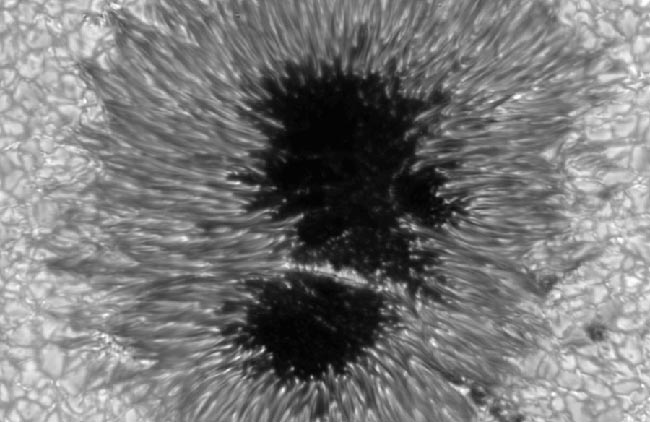Sun's Activity Increased in Past Century, Study Confirms

The energy output from the Sun has increased significantly during the 20th century, according to a new study.
Many studies have attempted to determine whether there is an upward trend in the average magnitude of sunspots and solar flares over time, but few firm conclusions have been reached.
Now, an international team of researchers led by Ilya Usoskin of the Sodankylä Geophysical Observatory at the University of Oulu, Finland, may have the answer. They examined meteorites that had fallen to Earth over the past 240 years. By analyzing the amount of titanium 44, a radioactive isotope, the team found a significant increase in the Sun's radioactive output during the 20th century.
Over the past few decades, however, they found the solar activity has stabilized at this higher-than-historic level.
Prior research relied on measurements of certain radioactive elements within tree rings and in the ice sheets covering Greenland and Antarctica, which can be altered by terrestrial processes, not just by solar activity. The isotope measured in the new study is not affected by conditions on Earth.
The results, detailed in this week's issue of the journal Astronomy & Astrophysics Letters, "confirm that there was indeed an increase in solar activity over the last 100 years or so," Usoskin told SPACE.com.
The average global temperature at Earth's surface has risen by about 1 degree Fahrenheit since 1880. Some scientists debate whether the increase is part of a natural climate cycle or the result of greenhouse gases produced by cars and industrial processes.
Breaking space news, the latest updates on rocket launches, skywatching events and more!
The Sun's impact on climate has only recently been investigated. Recent studies show that an increase in solar output can cause short-term changes in Earth's climate, but there is no firm evidence linking solar activity with long-term climate effects.
The rise in solar activity at the beginning of the last century through the 1950s or so matches with the increase in global temperatures, Usoskin said. But the link doesn't hold up from about the 1970s to present.
"During the last few decades, the solar activity is not increasing. It has stabilized at a high level, but the Earth's climate still shows a tendency toward increasing temperatures," Usoskin explained.
He suspects even if there were a link between the Sun's activity and global climate, other factors must have dominated during the last few decades, including the increase of greenhouse gases in the atmosphere.

